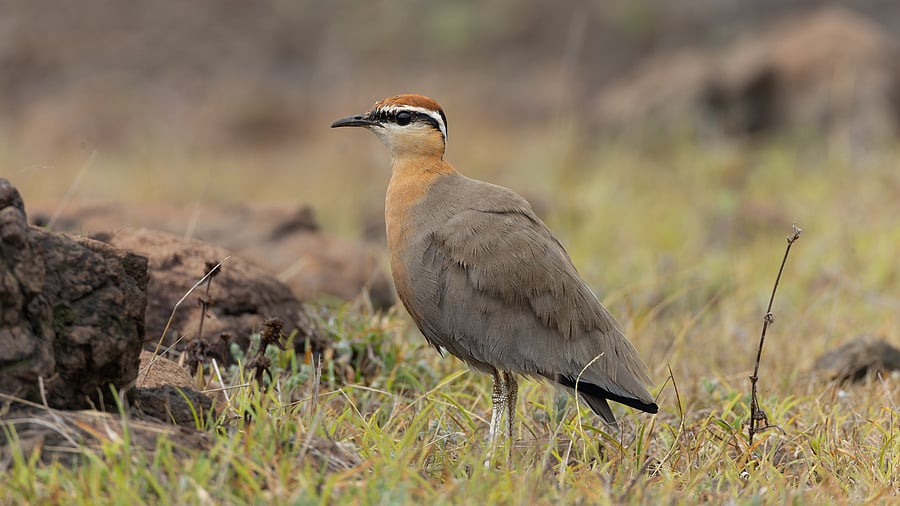
Indian Courser sighted in Bhigwan.
Credit: Tisha Mukherjee
Bengaluru: Four birds that were once abundant in India, including Karnataka's state bird Indian Roller (Neelakantha), have been listed as threatened by the International Union for Conservation of Nature (IUCN), taking the total threatened birds in India to 93, thanks to habitat destruction.
The latest updates to the list of species threatened with extinction was released on October 10 in Abu Dhabi, which is hosting the IUCN World Conservation Congress. This includes data published on a total of 1605 species of birds, terrestrial and marine animals in India, including some endemic species.
Among the assessed were 12 birds seen in India. The IUCN found eight of them to be doing well and tagged them as 'least concern'. However, it dialled up the concern ('nearly threatened') on four of the birds, including three birds for which concerns were flagged by the State of India Birds (SOIB) along with hard data.
The Indian Roller's habitat is spread from Srilanka in the south to Iran in the west, Bangladesh in the East and Kashmir in the north. According to SOIB, a whopping 39.98% decline in bird abundance has been noticed in India during the long term. In Karnataka, the decline was about 33.5%.
The Indian Courser has seen the steepest fall at a shockiung 76.5% decline. From north Karnataka to Telangana, Chhattisgarh and Madhya Pradesh the bird inhabits a sizable part of the country. The damage to the open natural ecosystem, including grazing lands, is seen as the main reason for the decline.
The Rufous-tailed Lark, also once common to Karnataka, has seen a rapid decline of 66.7% in India. The Long-billed Grasshopper-warbler, native to the Shrubland of the Himalayas, has seen a continuing decline in the area.
All four species that have been uplisted depend on open natural ecosystems. These ecosystems have been under pressure from the expansion of power infrastructure, intensification of agriculture, invasive species and misguided afforestation programmes.
Gopinathan Maheswaran, Senior Scientist at Zoological Survey of India, noted the need for a localised data on threatened species. “A national red list is essential for India—it allows us to evaluate threats and trends within our own ecological and socio-economic context. The IUCN list gives us a global view, but national assessments can drive region-specific conservation actions and policy responses like the case of Black-necked Stork, a declining species in India, but globally stable," he stated.